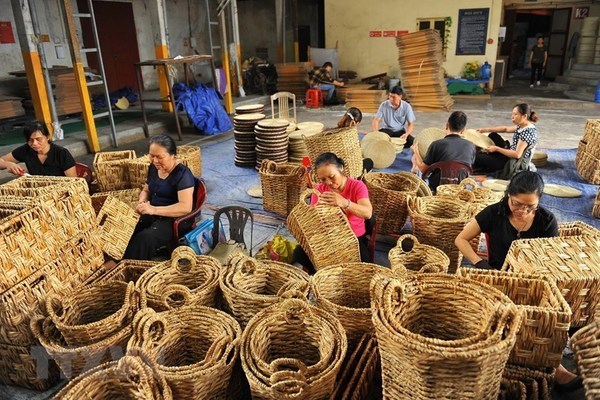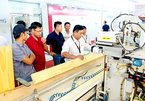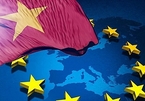Three containers of handicrafts from Hien Luong, one of the biggest handicraft export companies in Hanoi, will be shipped to Europe later this month.

Nguyen Thi Luong, director of Hien Luong, said this is Hien Luong’s first consignment to the EU after a period of interruption because of Covid-19, but it will be the last to enter the EU market under the old trade principles.
Everything will change once the EVFTA, between Vietnam and 28 EU member countries, takes effect in August. By that time, Vietnam’s handicrafts will not be able to enter the EU if enterprises cannot prove the product traceability.
“We face big difficulties when following procedures on product traceability to obtain certificate of origins because we cannot collect enough bills and vouchers,” Luong explained.
She said Hien Luong works with many small material suppliers and households, who do not issue invoices when providing products. Vietnam also has few chemical and material suppliers who have conformity certificates.
| The EU-Vietnam FTA (EVFTA) is expected to bring more opportunities to Vietnam’s enterprises to export products to the EU. However, it will be not easy for handicraft producers to obtain bigger market share there. |
Meanwhile, there are too many commodity codes, diverse manufacturing processes and many records, thus making it difficult to set up and supervise traceability system.
Covid-19 has changed consumer trends, and put pressure on goods buyers, setting stricter requirements on manufacturers. While Walmart requires examining SVHC (substances of very high concern), Tesco wants to trace products back to input materials.
However, Filip Graovac, Asia Foundation's deputy country representative in Vietnam, said he can see great opportunities opened by CPTPP and EVFTA, especially when Vietnam has emerged as a safe destination following the government’s success in containing COVID.
Vietnam has great potential to export handicrafts and farm produce. It can make good products and has responsible producers. However, he commented that Vietnamese are still not good at product traceability, though they are keen on doing business.
The demand for handicrafts is very high, over $100 billion. Meanwhile, Vietnam’s products just account for 2 percent, according to Le Ba Ngoc, deputy chair of the Vietnam Handicraft Exporter Association (Vietcraft).
Besides India, Vietnam has emerged as production source which makes sustainable products with high added value, while China and Thailand have decreased their presence.
India is also facing problems in traceability, but experts warn that with strong support from the government, the problems will be fixed soon which will help Indian producers surpass Vietnamese.
Traceability is challenging the growth of the handicraft sector which employs 1.5 million laborers and brings export turnover of $1.7 billion a year.
Mai Lan

Many businesses indifferent to EVFTA
EVFTA is expected to pave the way for Vietnam’s enterprises to exploit the EU market and its 500 million consumers and GDP of $18 trillion.

Can Vietnam’s enterprises take full advantage of EVFTA?
Deputy Minister of Industry and Trade Tran Quoc Khanh, speaking at a recent conference, expressed his concern about the indifference shown by many Vietnam’s enterprises to EVFTA (EU-Vietnam Free Trade Agreement).
 The EU-Vietnam FTA (EVFTA) is expected to bring more opportunities to Vietnam’s enterprises to export products to the EU. However, it will be not easy for handicraft producers to obtain bigger market share there.
The EU-Vietnam FTA (EVFTA) is expected to bring more opportunities to Vietnam’s enterprises to export products to the EU. However, it will be not easy for handicraft producers to obtain bigger market share there.